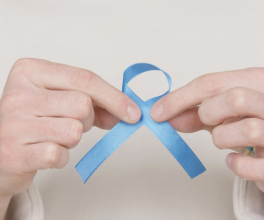
What Bugs You? 7 Facts You May Not Know About Microorganisms in Endoscopy
Whether you’re a budding microbiologist (a pun for those of that ilk) or you’re a seasoned infection prevention specialist, the origin, prevalence, and pathogenic tendencies of microorganisms may fascinate you. For those of us outside these specialties, it’s still worth knowing a bit about these sometimes ubiquitous bugs that are relevant to endoscopy and other healthcare settings. Test your knowledge below, based on content curated by Olympus infection prevention specialists, available at Overview of Relevant Microorganisms in Endoscopy (olympus.com). This A-to-Z list is complete with sourced links and additional reads!
Test Your Knowledge
1. Name the microbiologist who discovered Elizabethkingia meningoseptica (hint: it’s in the name). Bonus question: In what two clinical settings is this bug becoming more prevalent?
2. What microorganism linked with healthcare-associated infections and antibiotic use (think severe diarrhea) was renamed in 2016, and what is the new name?
3. True or False? Biofilm is not a concern related to microorganisms in endoscopic procedures in pulmonology and ear, nose, and throat (ENT) specialties.
4. True or False? None of the microorganisms relevant to endoscopy can be transmitted through the air.
5. In our A-Z list of relevant pathogens in endoscopy, which microorganism is of “very high relevance” in endoscopic procedures, and is of “high concern” for endoscope surveillance cultures?
A. Klebsiella pneumoniae
B. SARS-CoV-2
C. Pseudomonas aeruginosa
D. Streptococcus spp.
6. What is the main causative agent for tuberculosis in humans?
7. Which of these microorganisms have an endogenous (self-infection) route?
A. Giardia intestinalis
B. Strongyloides stercoralis
C. Viridans streptococci
D. Cryptosporidia
Answers
- Elizabeth O. King was the microbiologist who discovered Elizabethkingia meningoseptica, related to a low but increasing rate of healthcare-associated infections in neonatal wards and in dialysis patients.1,2
- Clostridium difficile, often referred to as C. diff, was reclassified in 2016 to a new genus and renamed Clostridioides difficile. Read more about why in this paper.3,4
- False. Methylobacterium mesophilicum is one example of a Gram-negative bacteria that is biofilm forming.5 Mycobacterium avium (see #4 below for description) is also biofilm forming.6
- False. The pathogen related to Mycobacterium avium is transmitted in the air, as well as contaminated food, water, and in biofilm. Infection with Mycobacterium avium can cause symptoms like those of tuberculosis such as pneumonia, cough, and fever.6
- The answer is A. Klebsiella pneumoniae is a Gram-negative, facultative (can live in more than one specific condition) anaerobic rod-shaped bacterium belonging to the genus Klebsiella. Infections from this bug can include pneumonia, urinary tract infections, wound infections, meningitis, and sepsis.7,8 SARS-CoV-2 is a virus, not a bug, and is also not considered a pathogen of relevance in endoscopy.9,10 If you guessed C or D, you guessed two neck-and-neck runners up!
- Mycobacterium tuberculosis is the main causative agent of tuberculosis in humans.11
- The answer is C. Viridans streptococci primarily causes infections of the oral cavity but can also cause more severe infections if they enter the bloodstream. In microbiology circles, it may be referred to as “greening streptococci” because of its appearance on blood agar plates.12
References
1. Centers for Disease Control and Prevention. Elisabethkingia. Accessed July 15, 2021. https://www.cdc.gov/elizabethkingia/index.html
2. Ratnamani MS, Rao R. Elizabethkingia meningoseptica: Emerging nosocomial pathogen in bedside hemodialysis patients. Indian J Crit Care Med. 2013;17(5):304-307.
3. The Lancet Infectious Diseases. C difficile-a rose by any other name… [published correction appears in Lancet Infect Dis. 2019 Jun;19(6):e187]. Lancet Infect Dis. 2019;19(5):449.
4. Centers for Disease Control and Prevention. Clostridioides difficile Infection. Accessed November 11, 2022. https://www.cdc.gov/hai/organisms/cdiff/cdiff_infect.html
5. Kovaleva J, Degener JE, van der Mei HC. Methylobacterium and its role in health care-associated infection. J Clin Microbiol. 2014;52(5):1317-1321.
6. Busatto C, Vianna JS, da Silva LV Junior, et al. Mycobacterium avium: an overview. Tuberculosis (Edinb). 2019;114:127-134.
7. Centers for Disease Control and Prevention. Klebsiella pneumoniae in Healthcare Settings. Accessed November 11, 2022. https://www.cdc.gov/hai/organisms/klebsiella/klebsiella.html
8. FDA.gov. Duodenoscope Surveillance Sampling & Culturing, Reducing the Risks of Infection, Department of Health and Human Services Collaboration, 2018. Accessed November 11, 2022. https://www.fda.gov/media/111081/download.
9. Centers for Disease Control and Prevention. Scientific Brief: SARS-CoV-2 Transmission. Accessed November 11, 2022. https://www.cdc.gov/coronavirus/2019-ncov/science/science-briefs/sars-cov-2-transmission.html
10. Boškoski I, Di Gemma A, Matteo MV, et al. Endoscopes used in positive and critically ill patients are SARS-CoV-2 negative at virological assessment. Gut. 2021;70(9):1629-1631.
11. Centers for Disease Control and Prevention. Tuberculosis (TB). Accessed November 11, 2022. https://wwwnc.cdc.gov/travel/diseases/tuberculosis
12. Doern CD, Burnham CA. It's not easy being green: the viridans group streptococci, with a focus on pediatric clinical manifestations. J Clin Microbiol. 2010 Nov;48(11):3829-35.





